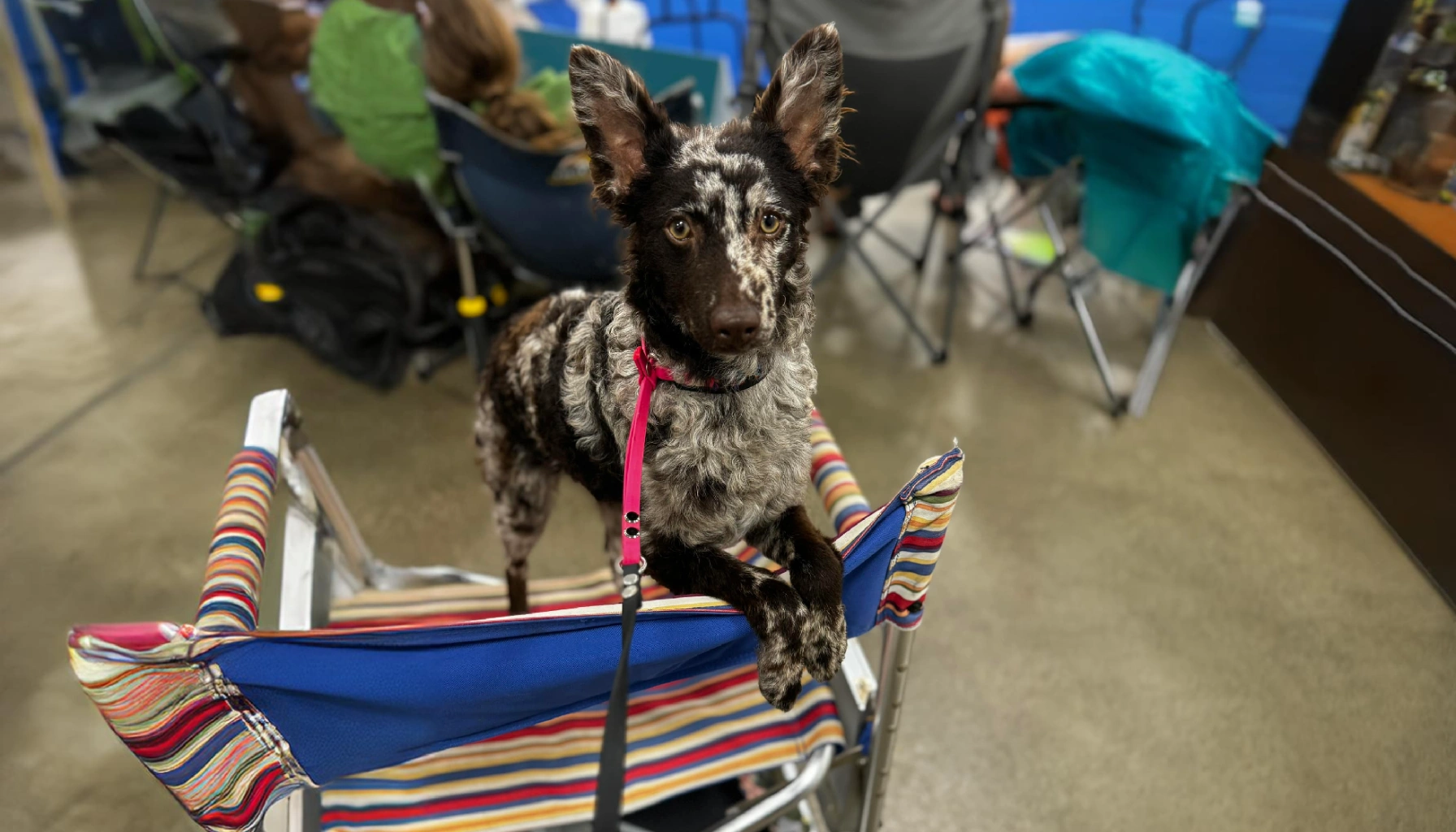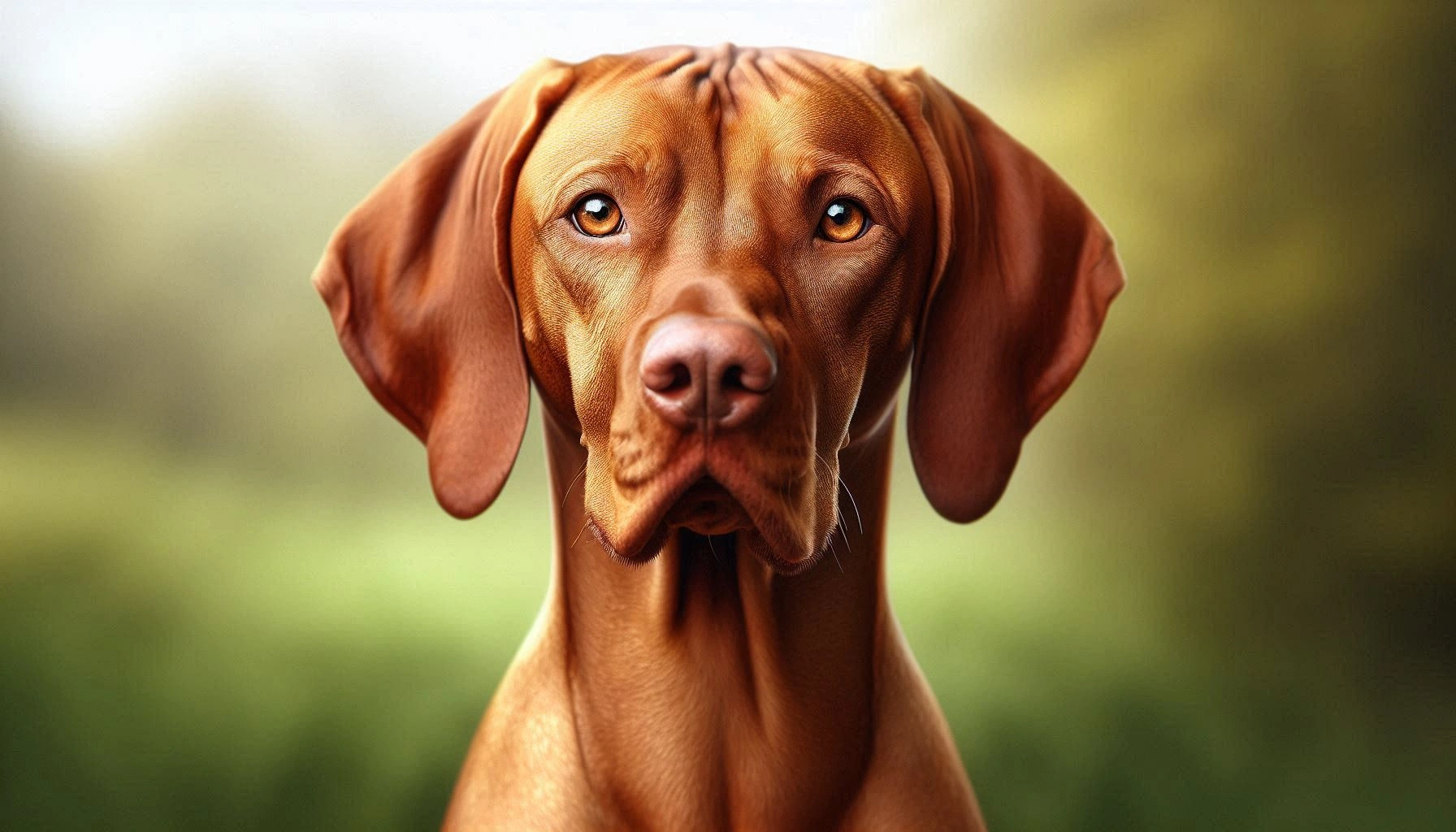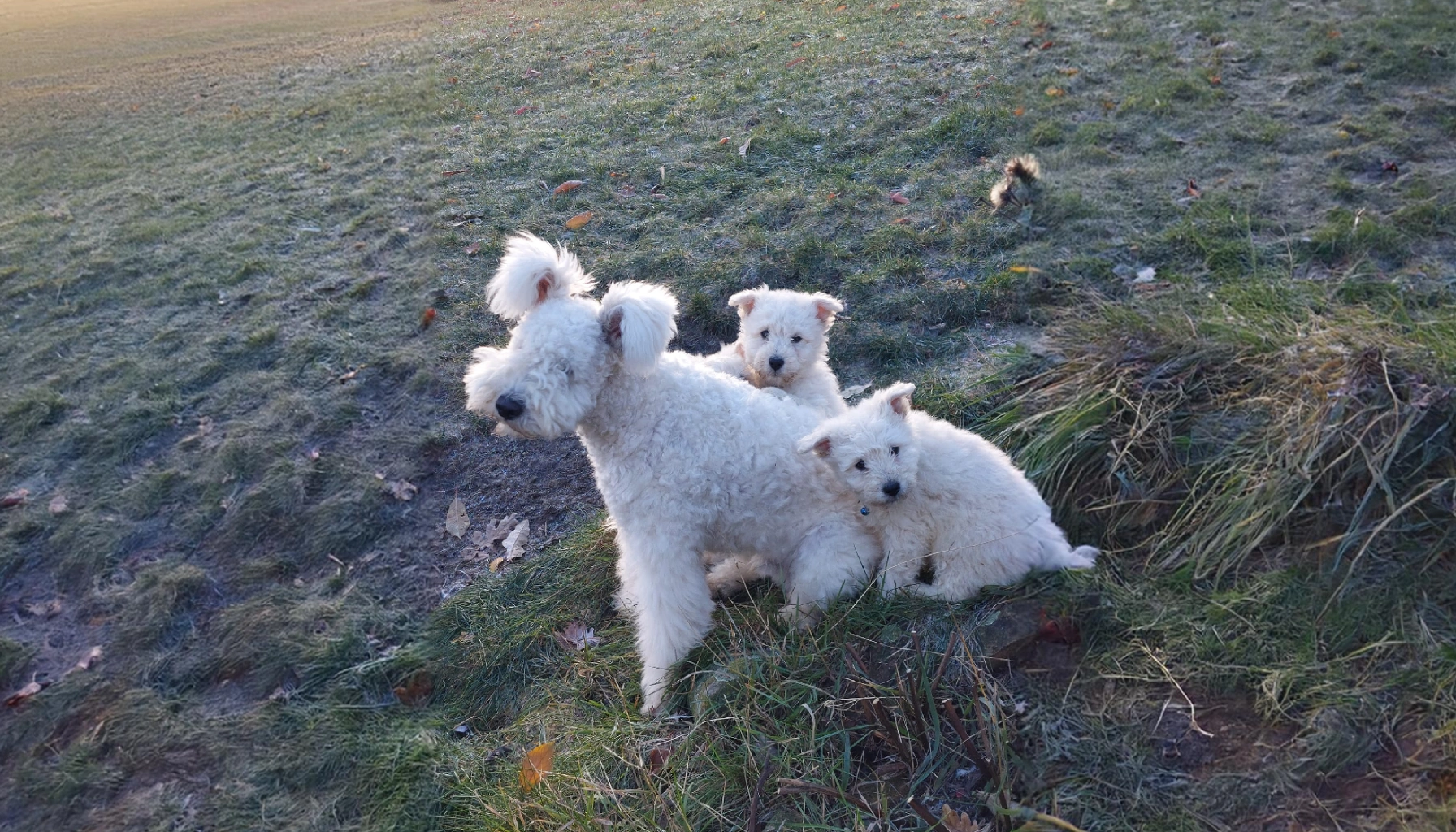Table of Contents
Hungarian Puli Dog Breed
The Hungarian Puli, often recognized by its distinctive corded coat, is a unique and ancient dog breed with a rich history. Known for its remarkable herding abilities, the Puli is not just a working dog but also a loyal companion. This breed is highly intelligent, energetic, and affectionate, making it a popular choice for dog owners who appreciate an active and engaging pet. The Puli’s striking appearance and playful personality have earned it a place in the hearts of dog lovers worldwide. This guide will explore everything you need to know about the Hungarian Puli, from its history and physical characteristics to its temperament, health, and care requirements.
Hungarian Puli Dog History and Origin
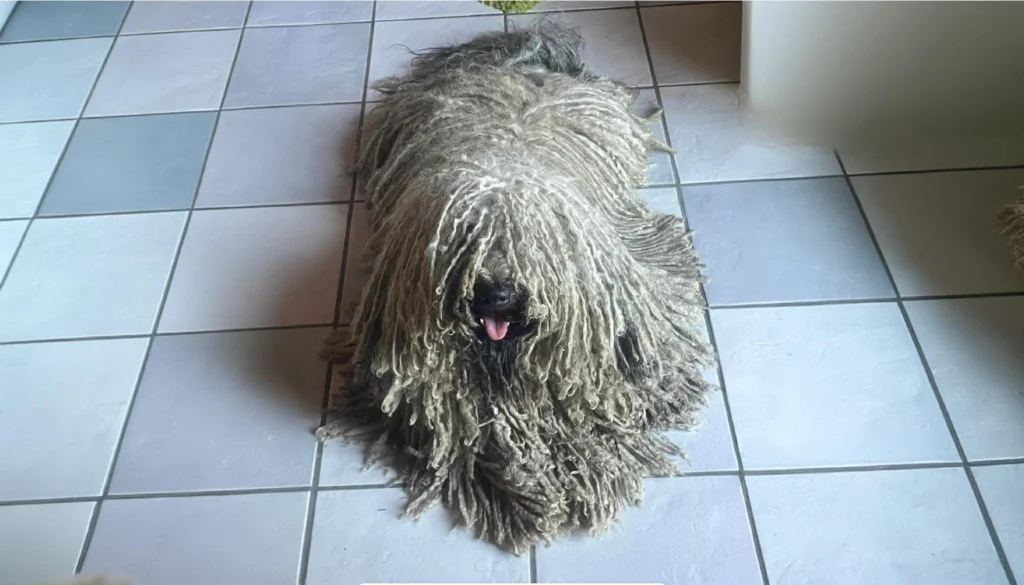
The Hungarian Puli is one of the oldest dog breeds, with roots tracing back over a thousand years. The breed originated in Hungary, where it was primarily used as a herding dog. The Puli’s ancestors were likely brought to Hungary by the Magyar tribes during their migration from Central Asia. These dogs were highly valued by Hungarian shepherds for their ability to manage livestock, particularly sheep.
In its early history, the Puli was known for its agility, intelligence, and unwavering work ethic. Shepherds would often use the Puli to herd and protect their flocks, relying on the dog’s keen instincts and quick movements. The breed’s distinctive coat also played a functional role, protecting it from harsh weather conditions and potential predators.
The Puli’s role as a herding dog declined in the 20th century due to changes in agricultural practices and the introduction of more modern herding methods. However, dedicated breeders worked to preserve the breed, and it has since gained recognition in the show ring and as a family companion. Today, the Hungarian Puli is celebrated not only for its herding abilities but also for its unique appearance and lively personality.
Hungarian Puli Dog Physical Characteristics
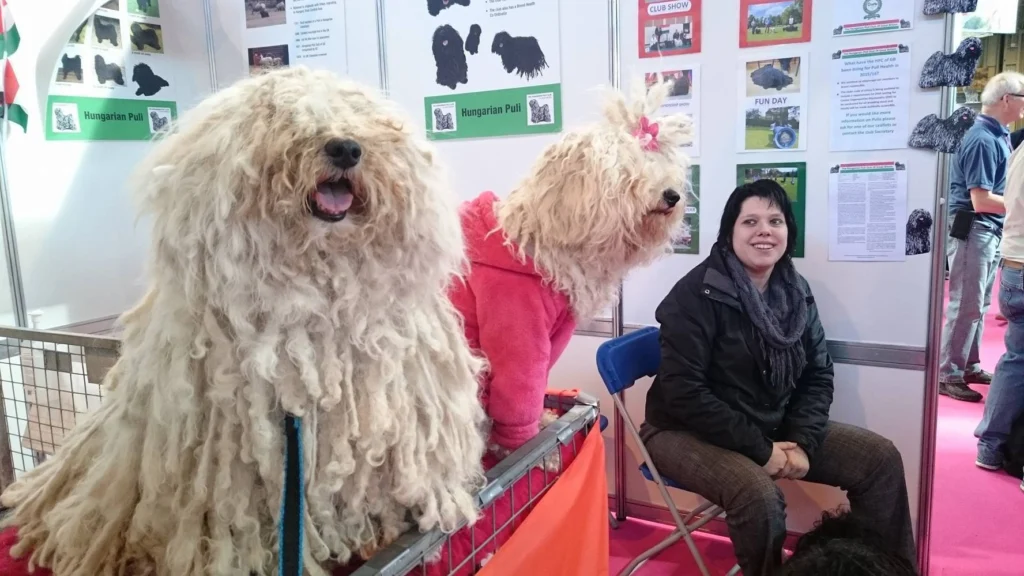
The Hungarian Puli is a medium sized dog, easily recognizable by its long, corded coat that often resembles dreadlocks. This breed’s distinctive look sets it apart from other dog breeds and is one of its most defining features.
Size and Build
- Size: The Puli typically stands between 16 to 18 inches at the shoulder and weighs between 25 to 35 pounds. Despite its medium size, the Puli is sturdy and well-muscled, built for agility and endurance.
- Build: The Puli has a square, compact body with a slightly rounded back. Its head is proportionate to its body, with a moderate stop and a black nose. The breed’s eyes are almond shaped and dark brown, giving the dog an alert and intelligent expression.
Coat Type and Colors
- Coat: The Puli’s coat is its most striking feature. The coat forms naturally into cords, which can range from tight curls to looser, rope like strands. This unique coat serves as protection against the elements and predators. The Puli has a dense undercoat that helps maintain the cords’ structure.
- Colors: The Puli’s coat can be black, gray, or white. Black is the most common color, though all colors are accepted by breed standards. The coat may take several years to fully cord and reach its characteristic length, often touching the ground.
Distinctive Features
- Cords: The Puli’s cords start forming at a young age and require careful maintenance to ensure they don’t mat or tangle excessively. These cords give the Puli a mop like appearance, which is both functional and visually striking.
- Expression: The Puli’s eyes and ears are often obscured by its coat, but the breed’s expressive face is always alert and ready for action.
Temperament and Personality
The Hungarian Puli is known for its lively and outgoing temperament. This breed is full of energy and thrives on physical activity and mental stimulation. Pulik (the plural form of Puli) are highly intelligent, making them quick learners and excellent problem-solvers.
Interaction with People
- Affectionate: The Puli is a deeply affectionate breed that forms strong bonds with its family members. They are known for being loyal and protective, often following their owners from room to room.
- Playful: Pulik are playful and enjoy engaging in games with their family. They are particularly fond of activities that challenge their intelligence and agility.
- Alert: The Puli is naturally alert and makes an excellent watchdog. They are quick to notify their owners of any unusual activity, making them good guardians.
Interaction with Children and Other Animals
- Children: Pulik generally get along well with children, especially if they are raised together. Their playful nature makes them great companions for active kids. However, due to their herding instincts, they may try to herd young children, which can lead to nipping. Proper training can help manage this behavior.
- Other Animals: The Puli’s herding background means they can coexist with other pets, particularly those they consider part of their flock. However, early socialization is important to ensure they interact well with other dogs and animals.
Health and Lifespan
The Hungarian Puli is a generally healthy breed, with a lifespan of 12 to 16 years. However, like all breeds, they are prone to certain health conditions.
Common Health Issues
- Hip Dysplasia: This is a genetic condition where the hip joint does not develop properly, leading to arthritis and pain. Regular screening and maintaining a healthy weight can help manage this condition.
- Cataracts: Pulik are prone to developing cataracts, which can lead to vision impairment. Regular eye check-ups can help detect this condition early.
- Progressive Retinal Atrophy (PRA): PRA is a degenerative eye disorder that can result in blindness. Genetic testing can identify carriers of this condition.
- Patellar Luxation: This condition occurs when the kneecap dislocates or moves out of its normal position, causing discomfort and lameness. In severe cases, surgery may be required.
Tips for Maintaining Health
To keep your Puli healthy, it’s important to provide regular veterinary care, a balanced diet, and ample exercise. Preventive measures, such as maintaining proper weight and providing joint supplements, can also help reduce the risk of certain health issues. Regular grooming, particularly in managing the Puli’s cords, is essential for preventing skin infections and matting.
Care and Grooming
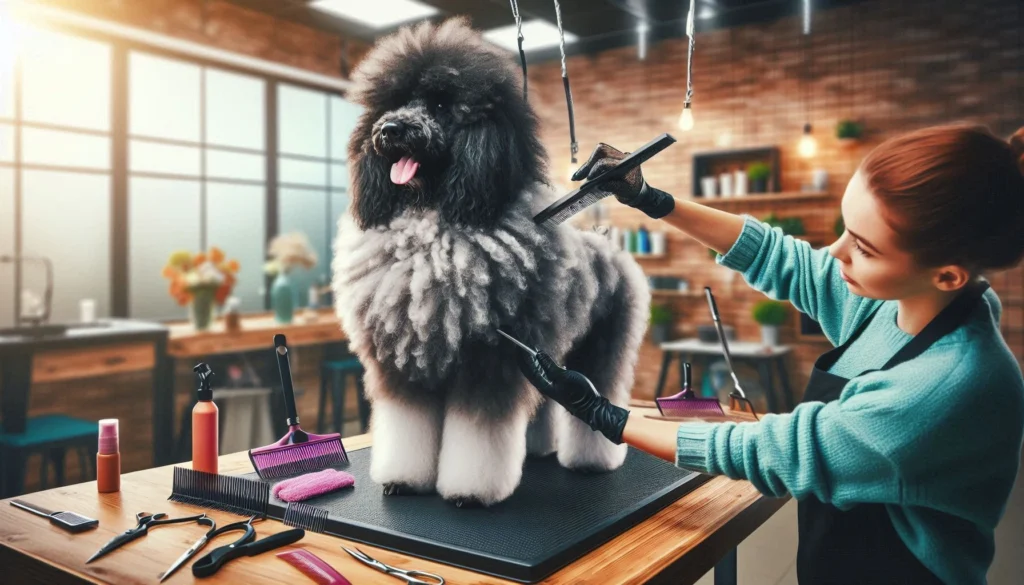
Caring for a Hungarian Puli requires a commitment to regular grooming, exercise, and proper nutrition.
Grooming Needs
- Coat Maintenance: The Puli’s corded coat requires significant maintenance. The cords need to be separated regularly to prevent matting and tangling. This process can be time-consuming, but it is necessary to maintain the health of the coat.
- Bathing: Bathing a Puli can be a challenge due to the dense cords. It’s important to thoroughly dry the coat after bathing to prevent mildew or mold growth. This may require several hours or even a professional grooming dryer.
- Nail Trimming: Regular nail trimming is essential to prevent overgrowth, which can cause discomfort and affect the dog’s gait.
- Ear Care: The Puli’s ears should be checked regularly for signs of infection or buildup of debris. Cleaning them with a vet approved solution can help prevent ear infections.
- Dental Care: Regular brushing of the teeth and providing dental chews can help maintain oral hygiene and prevent dental diseases.
Exercise Requirements
The Puli is an energetic breed that requires regular exercise to stay happy and healthy. Daily walks, playtime, and mental stimulation are essential for this active dog. The Puli excels in activities like agility, herding, and obedience training, which provide both physical and mental challenges.
Dietary Recommendations
Feeding a high quality dog food that meets the Puli’s nutritional needs is important for maintaining health and vitality. The diet should be rich in protein to support their active lifestyle. Portion control is also crucial to prevent obesity, which can exacerbate joint issues. Fresh water should always be available.
Training and Socialization
Training a Hungarian Puli can be a rewarding experience due to their intelligence and eagerness to learn. However, their independent nature can sometimes present challenges.
Training Tips
- Start Early: Early training and socialization are crucial for the Puli. Begin with basic obedience training and introduce the dog to a variety of environments, people, and other animals.
- Positive Reinforcement: Use positive reinforcement techniques, such as treats, praise, and play, to encourage good behavior. The Puli responds well to rewards and will quickly learn new commands.
- Consistency: Consistency in training is key. Set clear boundaries and stick to them to avoid confusion.
- Mental Stimulation: The Puli thrives on mental challenges, so incorporating puzzle toys, advanced obedience, or herding games can keep them engaged.
Socialization
Early socialization is important for the Puli to develop into a well rounded adult. Expose your Puli to different people, places, and animals from a young age to help them become confident and adaptable. This will also reduce the likelihood of behavioral issues such as excessive barking or shyness.
Suitability as a Family Pet
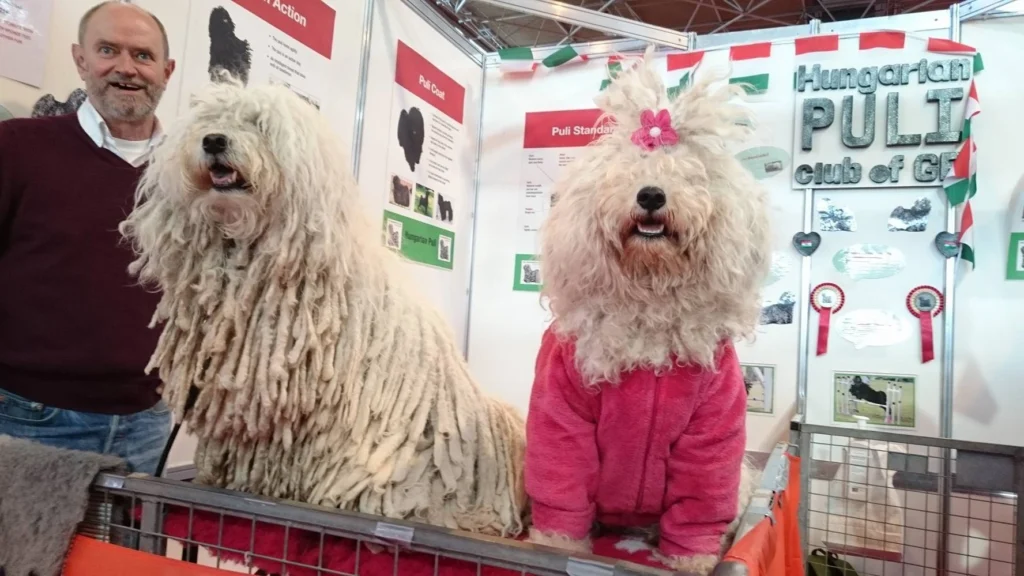
The Hungarian Puli can be a wonderful family pet for the right household. They are affectionate, loyal, and full of energy, making them great companions for active families.
Family Compatibility
- Children: The Puli is generally good with children and can be a playful and protective companion. Their herding instincts may lead them to try to herd children, so supervision and training are important.
- Living Environment: Pulik do best in homes with a yard where they can run and play. They are not well-suited for apartment living unless they receive ample outdoor exercise. A home with a fenced yard is ideal for a Puli to safely burn off energy.
- Activity Level: The Puli is a high energy breed that requires plenty of physical and mental stimulation. They are not suited for sedentary lifestyles and need an owner who can keep up with their active nature.
Fun Facts and Trivia
- Natural Herding Instincts: The Puli is known for its incredible herding abilities. They can control flocks with just their gaze and movements, making them one of the most skilled herding breeds.
- Royalty Approval: The Hungarian Puli has been a favorite of Hungarian royalty for centuries, often seen working alongside shepherds and guarding livestock.
- Waterproof Coat: The Puli’s corded coat is naturally water resistant, providing protection in wet and cold environments.
- Agility Stars: Pulik excel in agility competitions, where their speed and agility are on full display. Their ability to navigate complex courses with ease is a testament to their athleticism.
Dog Breeds Similar to Hungarian Puli


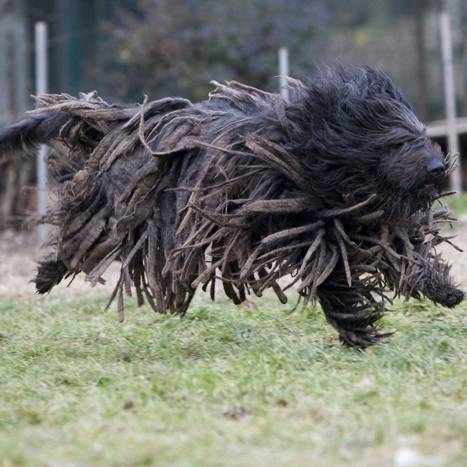
If you’re interested in the Hungarian Puli, you might also want to consider these similar breeds:
- Komondor: Also known as the Hungarian Sheepdog, the Komondor is a large, corded breed that shares the Puli’s distinctive coat. The Komondor is known for its guarding instincts and is often used to protect livestock.
- Bergamasco Sheepdog: The Bergamasco Sheepdog has a similar corded coat, though its cords are flatter and more matted. This breed is also a herder and is known for its calm and patient demeanor.
- Tibetan Terrier: Despite its name, the Tibetan Terrier is not a terrier but a herding breed. It has a long, shaggy coat that can be corded, and it shares the Puli’s lively and affectionate personality.
Conclusion
The Hungarian Puli is a truly unique breed with a rich history and a distinctive appearance. Their intelligence, energy, and loyalty make them excellent companions for active families who can meet their needs. Whether you’re looking for a working dog, a show dog, or a playful family pet, the Puli is a breed that offers both beauty and brains.
If you’re considering adding a Hungarian Puli to your family, take the time to learn more about the breed, visit reputable breeders, and meet some Pulik in person. This will help you ensure that this energetic and affectionate dog is the right fit for your lifestyle.
FAQs
Is the Hungarian Puli a dangerous dog?
No, the Hungarian Puli is not considered a dangerous dog. They are known for their friendly and protective nature. However, like all breeds, proper training and socialization are essential to ensure they are well behaved and comfortable around people and other animals.
Is the Hungarian Puli the best guard dog to protect you or your family?
While the Hungarian Puli is protective of its family and can make a good watchdog, it is not typically used as a guard dog. Their herding instincts and alertness make them good at notifying owners of any unusual activity, but they are generally too friendly and social to be considered effective guard dogs.
